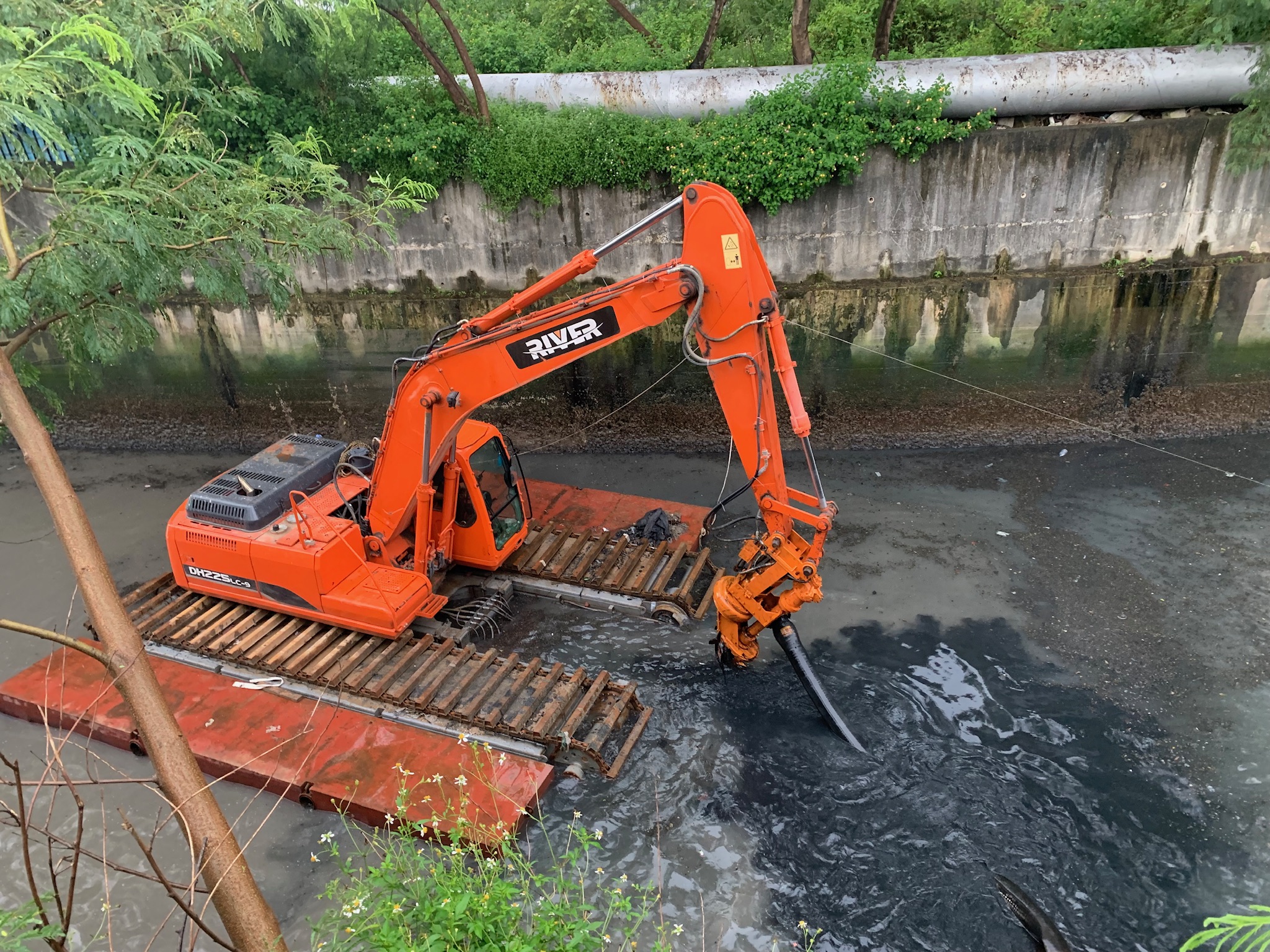What’s an amphibious excavator?
An amphibious excavator is a versatile piece of machinery that can be used for many different tasks and applications. It is designed to operate both on land and in water, making it an ideal choice for construction, dredging, and other types of work in aquatic environments. An amphibious excavator is a type of excavator that is designed to work in both terrestrial and aquatic environments. It is sometimes referred to as a swamp buggy, due to its ability to traverse swamps and shallow bodies of water.
Amphibious excavators are equipped with tracks and flotation units to allow them to move through water and mud. They are also equipped with an excavator boom, allowing them to dig and move materials in both wet and dry environments. Amphibious excavators are used in many industries including dredging, construction, and oil and gas exploration. They are an invaluable tool for completing projects in aquatic environments.
The Use of an amphibi0us excavator
The most common use of an amphibious excavator is in dredging and construction. It can be used to dig, move, transport materials, and excavate piers – a platform supported on pillars or girders leading out from the shore into a body of water, used as a landing stage for boats), docks, and other structures. In addition, it can be used to remove sediment from waterways, create channels, or dredge out ponds.
Other uses for an amphibious excavator include environmental work, such as clearing away debris and vegetation or removing sediment from shorelines and wetlands. It can also be used to create or repair shore protection structures, such as breakwaters (a barrier built out into a body of water to protect a coast or harbour from the force of waves) and dikes (a long wall or embankment built to prevent flooding from the sea).
The applications of amphibious excavators
An amphibious excavator, also known as a floating excavator or marsh buggy excavator , is an excavator that is specially designed to operate in wetlands, marshes and other shallow water bodies. This type of excavator is equipped with tracks, which are buoyant and enable it to move easily in water. It also has a protective skirt that prevents water from entering the cab. The excavator has a boom arm that is used to dig, scoop and move materials and debris in and out of the water.

- The application of an amphibious excavator is wide-ranging, including dredging, dewatering, land reclamation, and construction and maintenance of irrigation and drainage systems. It is an ideal tool for use in wetland and marsh areas because it can easily manoeuvre in shallow water, and its tracks provide flotation, allowing it to traverse over soft and uneven terrain without causing damage. Additionally, it can be used to clear vegetation, dig canals and trenches, and perform other tasks requiring precision and great force.
- The amphibious excavator is also a great asset for disaster relief operations. It can be used to quickly clear debris and provide access to areas that would otherwise be inaccessible. In addition, it can be used to move materials and equipment during rescue efforts and for emergency infrastructure maintenance.
- In conclusion, the amphibious excavator is a versatile and powerful tool that can be used in a variety of applications. Its buoyancy and ability to traverse through shallow water make it an ideal choice for use in marshy areas and other wetland habitats.
Additionally, its precision and strength make it a great choice for various construction and maintenance tasks, as well as for emergency and disaster relief operations.
What are the advantages of using amphibious excavators?
An excavator with pontoons offer several advantages over traditional land-based excavators. These machines are designed to work both in water and on land, which makes them very useful and versatile. Benefits include:
- Increased Mobility: Amphibious excavators are able to move freely between land and water, allowing them to access areas that would otherwise be inaccessible with traditional excavators. This increased mobility makes them ideal for working in areas such as wetlands, marshes, and other areas with limited access.
- Cost Savings: Amphibious excavators can perform tasks that normally require multiple machines, resulting in cost savings. This allows for a single device to perform various tasks, reducing the project’s overall cost.
- Increased Efficiency: The ability to transition between land and water means that amphibious excavators can work more quickly and efficiently, reducing the overall project time. This allows for faster and more efficient job completion.
- Safety: Amphibious excavators are designed to provide a safe working environment. Their low ground pressure and floatation capabilities reduce the risk of sinking or collapsing. Additionally, they are equipped with safety features such as anti-roll
Learn more about the advantages of River’s amphibous excavators: https://www.riverexcavator.net/advantages-of-river-amphibious-excavators-you-should-know/
